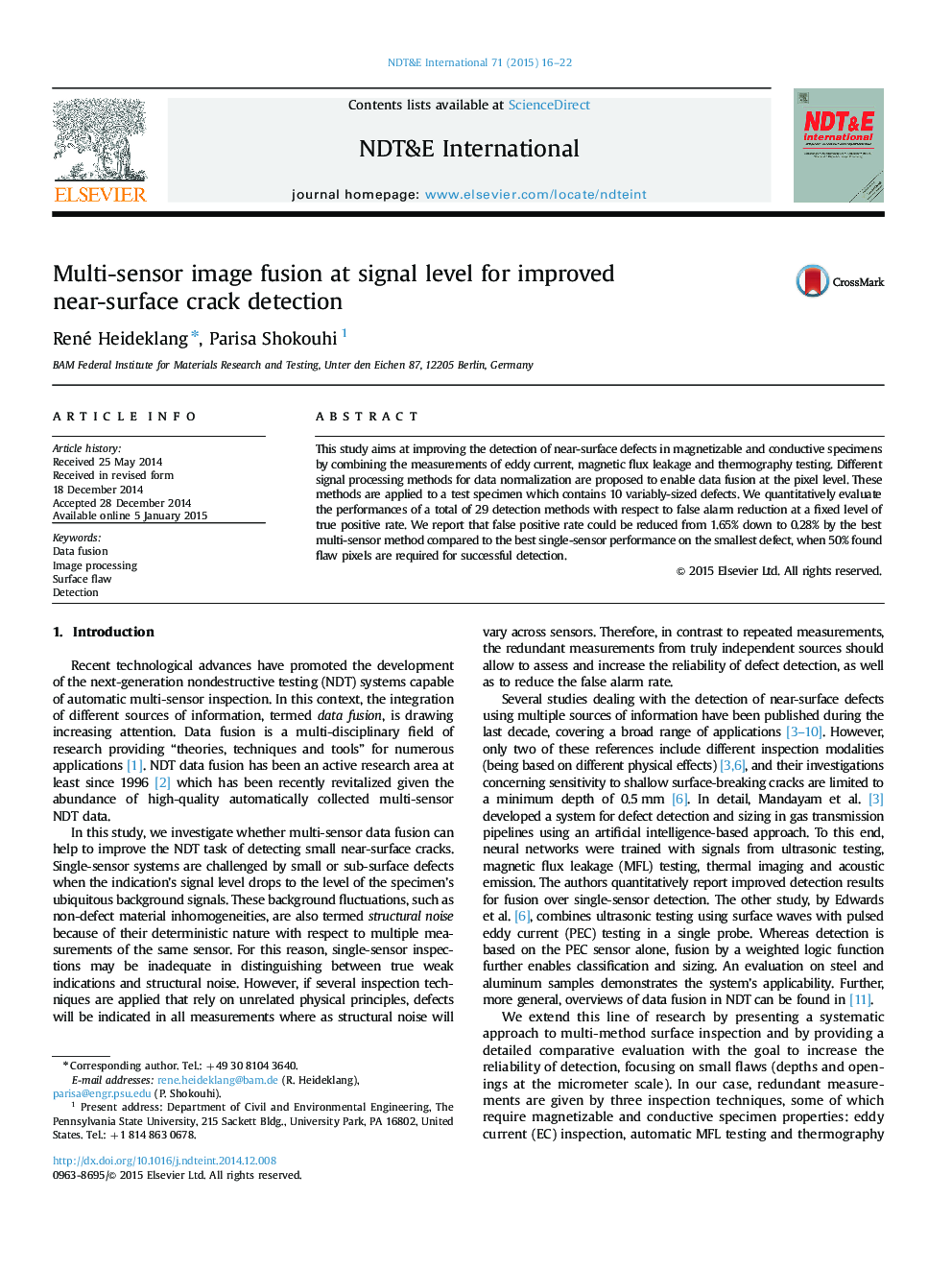| Article ID | Journal | Published Year | Pages | File Type |
|---|---|---|---|---|
| 295035 | NDT & E International | 2015 | 7 Pages |
•We investigate pixel-level data fusion for crack detection.•Three surface-sensitive NDT methods are considered.•We propose methods for signal normalization regarding shape and magnitude.•We quantitatively evaluate 29 detection methods regarding false positive rate.•Almost all investigated fusion methods outperform single-sensor inspection.
This study aims at improving the detection of near-surface defects in magnetizable and conductive specimens by combining the measurements of eddy current, magnetic flux leakage and thermography testing. Different signal processing methods for data normalization are proposed to enable data fusion at the pixel level. These methods are applied to a test specimen which contains 10 variably-sized defects. We quantitatively evaluate the performances of a total of 29 detection methods with respect to false alarm reduction at a fixed level of true positive rate. We report that false positive rate could be reduced from 1.65% down to 0.28% by the best multi-sensor method compared to the best single-sensor performance on the smallest defect, when 50% found flaw pixels are required for successful detection.
